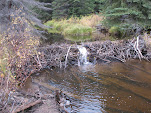As of the middle of 2025 with the military hit that Iran took on her military and nuclear capacity, it is interesting to look at some of the details of nuclear bombs and what Iran intends to do with them. My underlying premise for this blog is that if a dictator or would be dictator says he is going to do something and it is a bad thing, we should take their word for it and act accordingly. Hitler's Mein Kampf was the classical example. He laid out what he intended and did his best to carry it out. If, on the other hand a dictator say that he is going to do something good, wait and see. It is likely that he is trying to disarm your suspicions and to buy time to do the bad thing.
Let's look first at some nuclear technology.
Uranium consists of two isotopes. U235 and U238. The difference is how many neutrons it has in its nucleus. Of course both have the same number of protons. An atom with a different number of protons would be a different element.
Many elements have different varieties(Isotopes) and some of them are radioactive. This means that they break down into other elements, giving out particles (neutrons, protons, electrons, helium nuclei) and radiation in the form of very high energy electomagnetic gama rays.
The heaviest ones are not necessarily the most unstable. There are 'sweet spots' in which a certain number of neutrons and protons are stable and others are less stable. Uranium is a case in point. The half life of U235 is 703million years while the half life of U238 is 4.5billion years, 6,400 times as long. That is why there is more U238 in a sample of natural Uranium than U235.
If you want to run a nuclear power plant or make a nuclear bomb, you must concentrate the U235. For a power station, you need U which is between 3 and 5% U235.
You can separate out the U235 from the U238 in a couple of ways. Both depend on first turning the U into a gas by reacting it with F (fluorine). The U238 gas is slightly heavier than the U235 gas. Then you can run it through pipes with barriers containing tiny holes. The U235 gas diffuses more readily through these battiers and is slightly enriched. You use cascades of these to enrich the gas more and more. The other way is to use ultra-centrifuges. This does basically the same thing and you use cascades of these also.
A bomb can be made from Uranium with as little as 20% U 235 but the richer it is, the less of it you need for a bomb. Roughly speaking you need 50kg of U235 so if your Uranium was only 20% U235,you would need 5 times as much (250kg) than if you had highly enriched Uranium.
In a power plant, the U238 is bombarded with neutrons which they capture in their nucleus and through a couple of radioactive disintegrations, in which one of the neutrons gives out an electrons and turns into a proton, Pu 239 is produced. You can make a bomb from U239 and only need under 10kg of Pu239. The half life of Pu239 is just over 24,000 years.
Incidentally, the shorter the half life of an isotope, the more radioactive and hence the more dangerous it is but the quicker it disappears if produced in a pile or bomb. This is not altogether true as it also depends on which sort of radiation it emits and its biological interaction with organisms.
Making a bomb like the first one dropped on Hiroshima is child's play for an engineer. You use the rapid assembly method in which half the needed nuclear material to make a critical mass, in the form of a cannon ball, is fired into the other half in the form of a 'catchers mitt'. This first bomb use highly enriched Uranium with some as much as 89% and some of it 50%. It used a total of 64kg of Uranium.
The second bomb dropped on Japan used Plutonium, which was produced in the nuclear pile that the scientists were running. It only used 6.4kg of Pu. It used the compression method in which shaped charges of conventional explosives all go off at the same time, compressing a sphere of Plutonium. It is much more sophisticated to build but not a problem for a society in which there are explosive experts. The Plutonium is purified from the waste nuclear material from a civilian power plant.
In light of all the above let's look at Iran. She only needs Uranium which is enriched to between 3 and 5% for her power plant. So why has she, reportedly, already enriched to 60%. Duhhhhh!! She doesn't need to go to 90% as has often been indicated in various reports. If she has saved any of the 60% Uranium from the military hits, she might need, say, 90kg of this material to make a bomb. Does anyone doubt that a regime that perpetrated Oct7 would shy away from using it on Israel (the little devil) and Europe and America (the big devils). As for delivery mechanisms, a rocket is possible but I can think of a whole raft of other ways of delivering a nuke to anywhere you want.
In addition, as I said, Iran has a civilian (yehh right!!) power plant. This power plant is making Pu as we speak. Iran must never be allowed to refine this waste. You need much less Pu than U to make a bomb.
It would appear that Israel and the USA only just struck Iran in time. In fact at the last possible moment. And the danger is not over. To anyone in the rest of the Middle East, in the Far East, in Europe, in Asia or the Americas that thinks this is over, think again.

No comments:
Post a Comment